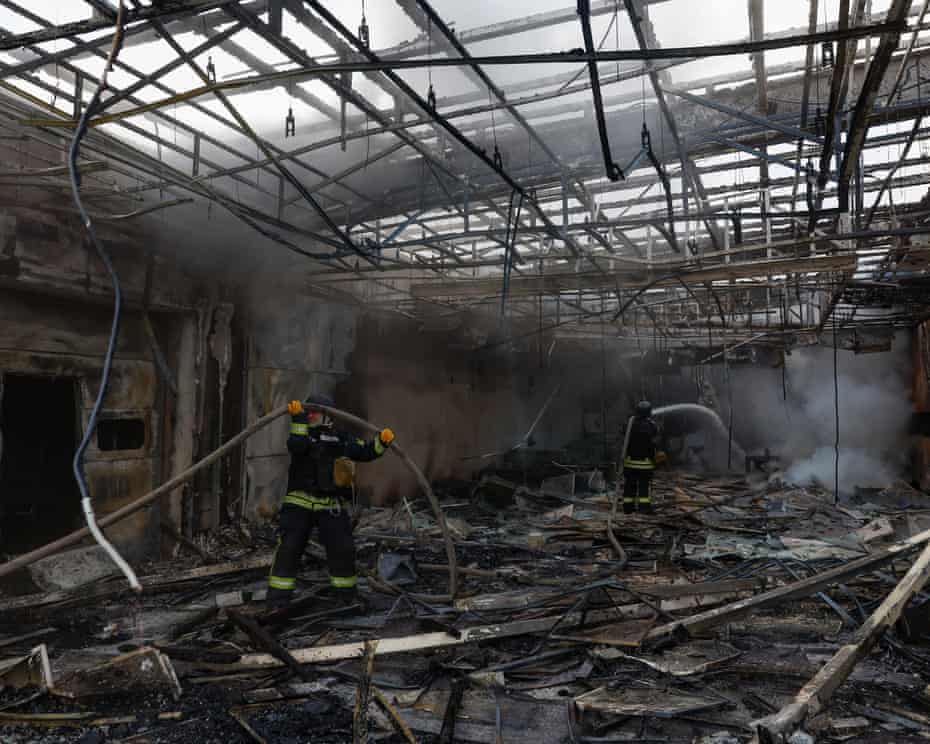Russia launched its largest drone assault on Ukraine since the war began in 2022, killing a 28 year old woman and wounding at least three others, including a four year old child, in the Kyiv region. The overnight attack on Sunday involved a staggering 273 drones, primarily targeting Kyiv, Dnipropetrovsk, and Donetsk.
The unprecedented strike came just one day before a scheduled phone call between Russian President Vladimir Putin and U.S. President Donald Trump, and two days after the first direct talks between Russia and Ukraine since 2022. While the scale of the attack appeared more symbolic than strategically destructive, officials in Kyiv say it was aimed at pressuring Ukraine ahead of delicate diplomatic moments.
Ukraine’s air force reported that 128 of the drones vanished from radar, likely due to fuel exhaustion, malfunctions, or because they were non-explosive decoys. Another 88 were successfully intercepted and shot down.
“This was not just an air assault, it was psychological warfare,” said Andriy Kovalenko, head of Ukraine’s Centre for Countering Disinformation. “Russia has always used violence to manipulate the tone of negotiations.”
Experts say Russia’s use of decoy drones is increasing in sophistication. Many are fitted with Luneberg lenses, devices that amplify radar signatures to mimic more dangerous threats like cruise missiles. These decoys, often made of plywood and foam to resemble Shaheed-136 drones, are mass-produced in the Alabuga Special Economic Zone in Tatarstan, the same facility that manufactures real drones.
“Decoys force Ukrainian defenders to react, reveal their positions, and waste valuable munitions,” said Serhii Kuzan, head of the Ukrainian Security and Cooperation Centre. “Once they do, Russia can target those defence systems in follow-up strikes.”
Despite the vast number of drones deployed, the attack’s physical damage was relatively limited. Still, the psychological and strategic implications are far-reaching.
The barrage comes at a politically charged moment. On Friday, Russian and Ukrainian officials met in Istanbul for their first face-to-face dialogue in three years. While the 100-minute meeting failed to achieve a temporary ceasefire, the sides agreed to exchange 1,000 prisoners of war. Monday’s call between Trump and Putin is expected to further stir international debate, as the U.S. president continues to demand an “end to the bloodshed.”
Trump also confirmed he would speak with Ukrainian President Volodymyr Zelenskyy after his conversation with Putin.
Overnight, air raid sirens blared for nine consecutive hours across Kyiv and Ukraine’s east, keeping millions under siege from dusk until 9 a.m. Air defence units scrambled to repel the waves of incoming drones, many of which were deliberately launched to trigger and exhaust Ukraine’s protective systems.
Just one day prior, a separate drone strike in Sumy killed nine civilians aboard a shuttle bus, prompting Zelenskyy to call the attack “deliberate” and renew calls for tougher sanctions on Moscow. Russia claimed it was targeting a military installation.
As Moscow ramps up its drone production, Ukraine and its allies now face a grim reality; the war is evolving into a full-blown drone arms race, with deadly consequences and high geopolitical stakes.



